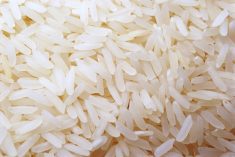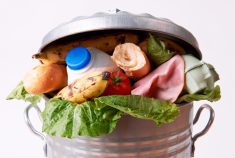The European Union’s financial crisis is big news these days, which made a seminar for North American journalists about EU monetary policy particularly timely. Naturally, a Canadian farm journalist had to ask about the future of the Common Agricultural Policy, which we are often told is unsustainable and about to break the EU bank.
The EU officials were somewhat bemused. It soon became clear that agricultural spending cuts aren’t imminent, despite the fact that the CAP’s 40-billion-euro ($54-billion) budget consumes a seemingly enormous proportion of the EU’s overall budget.
Read Also

Cooking fish of Manitoba: Keep your catch fresh and tasty for the table
Fishing in Manitoba provides mouthwatering meals, assuming anglers handle, process and cook their fish properly before sitting down to eat. Here’s how, with recipes and fish preparation tips.
There are two reasons. First, the CAP, which dates back to the early 1960s, was one of the EU’s building blocks. It was forged of necessity, a common effort to bring political stability through food security to a region still suffering the after effects of war. The 1957 Treaty of Rome set out its initial criteria:
Increase productivity, by promoting technical progress and efficient use of labour;
Ensure a fair standard of living for the agricultural community;
Stabilize markets;
Secure availability of supplies;
Provide consumers with food at reasonable prices.
The CAP, through the evolutions of the policies since, is still about food security. The concepts of environmental sustain-ability and export competitiveness have only recently started to creep into discussions over its future. Despite the reality that the EU has grown to become the world’s largest agricultural exporter, it is also the world’s largest importer.
Secondly, even though the CAP consumes between 40 and 50 per cent of the European Commission’s total budget, the EC’s budget only represents one per cent of the EU’s collective GDP. That’s small potatoes in the vast realm of public spending likely to suffer from fiscal restraint strategies imposed by member countries.
The European Commission in conjunction with the 756-member European Parliament determines the amount of agricultural spending and how it will be paid out every five years.
That central budget remains intact, assuming the EU’s 2011 budget, currently stalled in Parliament, is passed as expected later this month.
“CAP for 2011 will be exactly as planned, whereas in virtually every other sector of public spending in Europe – because it is done at a national level – there are enormous cuts,” Roger Waite, agricultural spokesperson for the European Commission, said in an interview.
If agricultural spending were left up to individual states, it’s possible overall agricultural spending would be much higher as wealthier nations used their deeper pockets to further their industries. At the same time there would be less coherence between countries, which, as Canadian farmers well know, undoubtedly leads to friction on the trade front.
The EU, now a collection of 27 member states with 23 official languages, can hardly afford that – especially in the context of the present financial crisis.
This is not to suggest the CAP is immune to reform. Support payments to farmers have been scaled back and decoupled from production. Further reforms are planned to incorporate environmental and rural development priorities – supporting a so-called “living countryside.”
But the budgetary security enjoyed by farmers has become a political liability. While workers lose their jobs, and pensions and unemployment benefits are cut as governments scramble to get their debt under control, some of the wealthiest people in the countryside – dubbed the “barley barons” – continue to receive fat cheques from Brussels.
Linking direct subsidies to new “green” objectives would help justify the policy to EU taxpayers, even though it will mean cuts for some.
“The CAP has never been so close to a crisis of legitimacy as it is today,” EU Agriculture Commissioner Dacian Ciolos says in a recentReutersreport. “This is an opportune moment to refocus (the CAP) in line with the expectations of society.”
But rather than being a point of contention, the CAP serves as a foundation for further integration in the EU. It was followed by the eurozone, the common currency first created in 1998, which will soon have 17 members. Officials at all levels in the governing bodies in the Brussels and at the European Central Bank in Frankfurt are now saying the key strategy for avoiding a repeat of the current crisis, will be a further integration of monetary and fiscal policy.
Some even suggest behind the scenes that the present crisis has created the momentum needed to fast-track those efforts.
Many outside observers, have predicted this macro experiment in multiculturalism united under a common governing council is doomed to fail. It’s true that the huge cultural differences and varying degrees of economic strength and weakness, create tension.
But this region of the world understands better than most that the alternatives are much worse. [email protected]


















